It’s a Good Outdoor Design in OD Green, but Just Okay in Silver
The CRKT Bona Fide is easily one of my favorite designs to come out in early 2021. Not only does it look original outside, it has a functional mechanic inside that makes it stand out from everything else coming out in a pretty significant way.
It has a weird problem when it comes to the steel and the grind, because there are two versions of both, and owning both of those versions is like being Goldilocks in a world where the bears never had a child: no option is just right.
Also the bears probably never come home because they’re too busy spending their disposable income on beekeeper tours and trips to the west coast in the middle of the salmon run. In the meantime, I’m left alone in their house, anxiously trying to decide between a strong silver bed that’s too wide behind the edge, or a green bed with softer steel and a full flat grind.
I should make this clear right now, though. The title is kind of click bait, because this isn’t entirely a test between 1.4116 steel and D2 steel. It’s a test of how well CRKT handles both of those steels, and, spoiler, they haven’t quite gotten things figured out with D2.
OD Green Bona Fide
Silver Bona Fide
Specifications
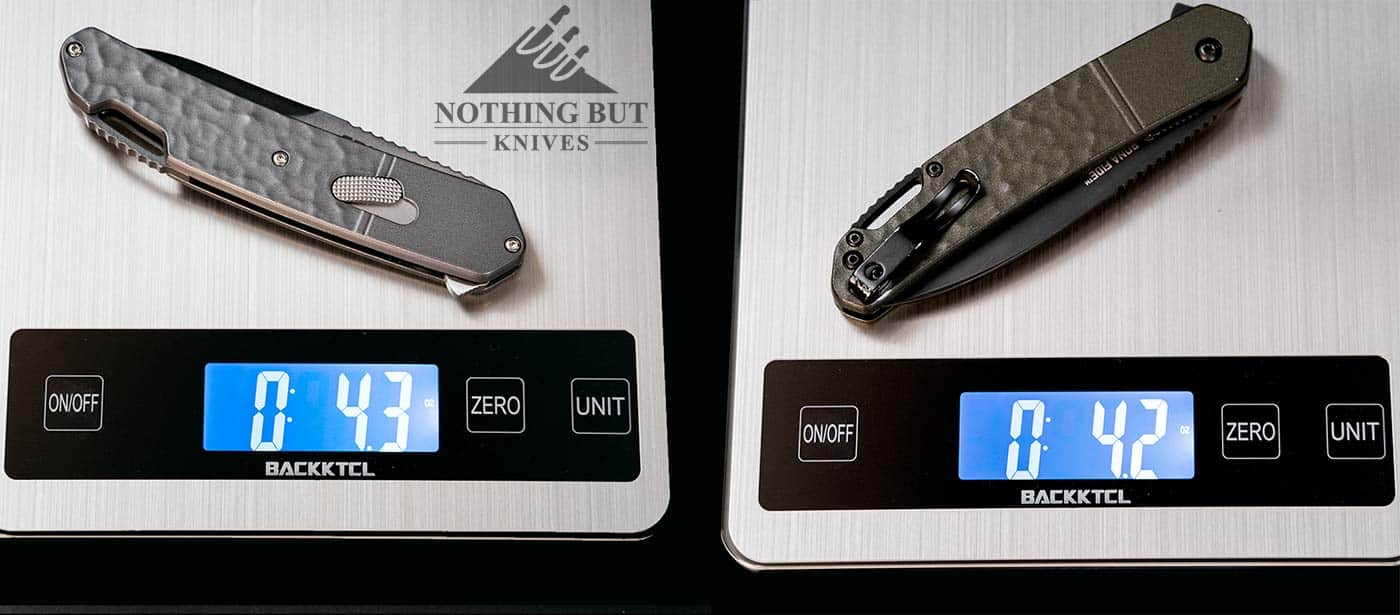
| Overall Length | 8.125” |
| Blade Length | 3.5” |
| Blade Thickness | 0.14″ |
| Blade Steel | D2 or 1.4116 |
| Handle Length | 4.625″ |
| Blade Shape | Drop Point |
| Blade Grind | Flat (but see grind section) |
| Handle Material | Aluminum |
| Lock Type | Liner |
| Weight | 4.325oz or 4.16oz |
Pros
| Nifty Field Strip 2.0 actually works really well |
| Unique design with a lot of function |
| Super nice edge (on the OD Green version) |
| Good blade strength (on the D2 version) |
Cons
| The field strip can get finicky over time |
| Subpar edge retention (OD Green version only) |
| Subpar sharpness (Silver D2 version only) |
Important Differences Between 1.4116 Steel and D2 Steel Version
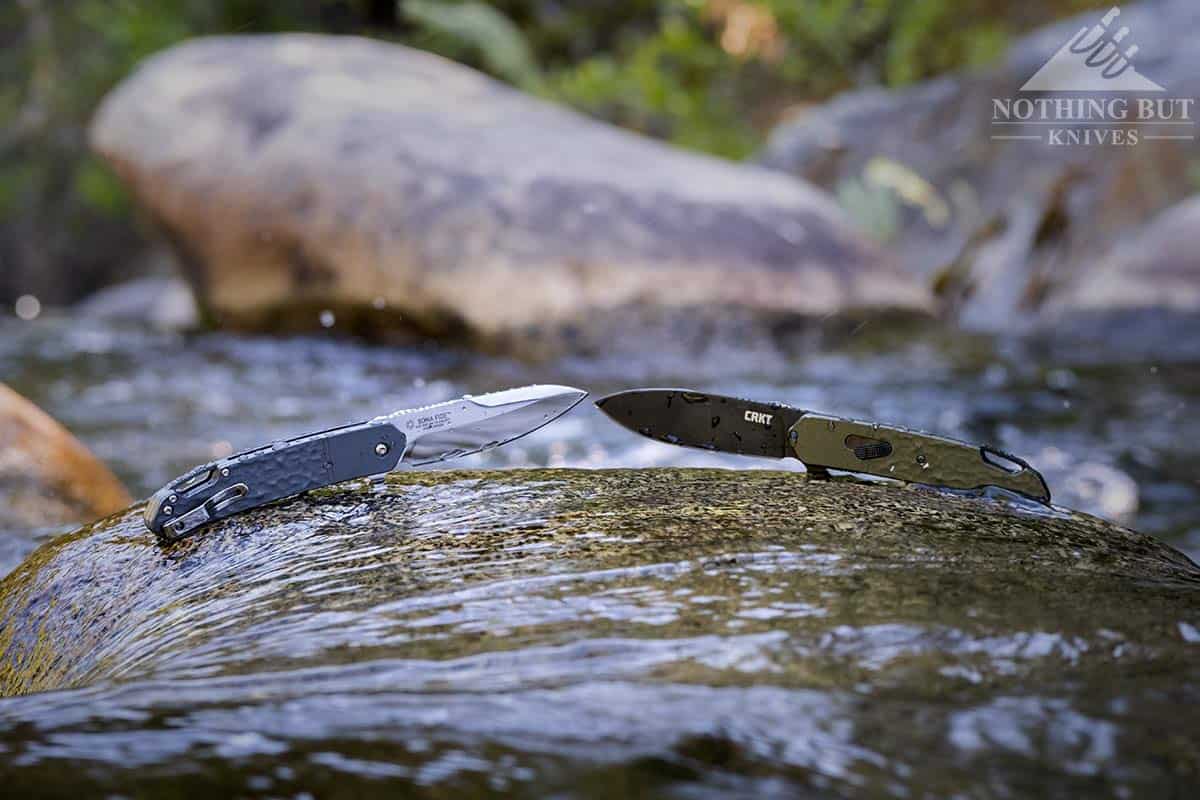
I’ll talk about the overall design and the normal knife review stuff later, but I need to get this thing with the steel out of my system.
As of this writing, there are two versions available for the Bona Fide (although I’ve heard there was a limited S35VN edition released before the knife dropped officially, and I’m not bitter about missing out on that at all):
There’s the version with OD green aluminum scales, a black finish, and 1.4116 steel, and the version with silver aluminum scales, a satin finish, and D2 steel.
I have no real answer as to why you can’t get both knives with either a black or satin finish with silver or OD green scales. Maybe some mysteries weren’t meant to be solved. The important take away here is that this is a rare case where the color of knife you choose is actually relevant to the levels of functionality.
The Grinds
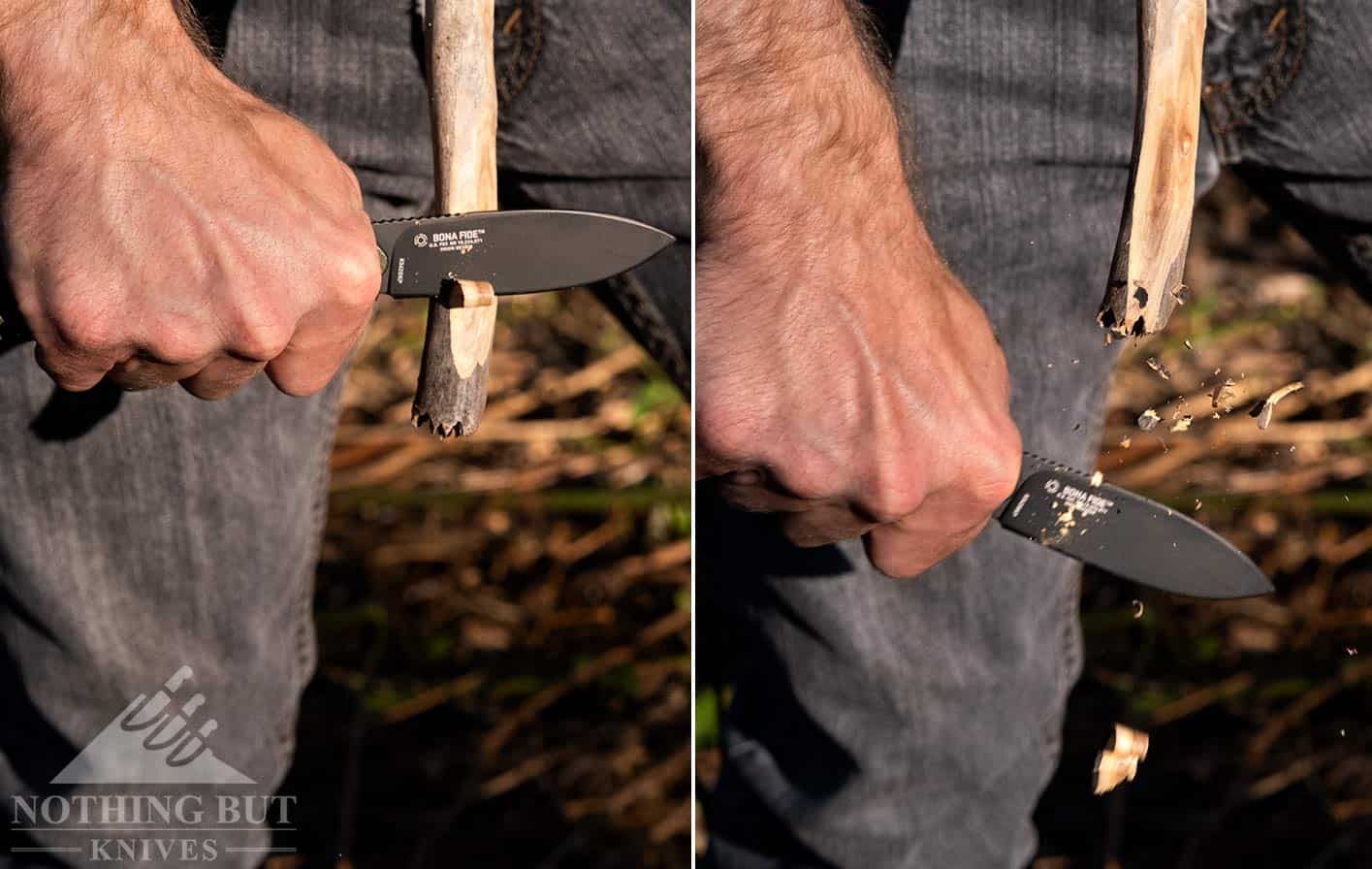
On paper, one might think this was simply a choice of steel, or (if you don’t care about steel grades) what color you want, but the differences go deeper than that:
- The 1.4116 version is very soft, but cuts effortlessly and is less prone to rust.
- The D2 version is heavier and harder, but doesn’t cut as smoothly.
Where the black-finished 1.4116 version has a simple, full flat grind, the D2 version has a compound flat grind that ends halfway up the blade’s height. There’s some trouble with the execution of the grind with the D2 which has some domino effects in the overall weight and the cutting ability of each version, but I’ll dig into that a little later.
I can’t say for sure why they’ve ground these so differently, but my best guess is that they’re worried about the D2 chipping if they let the whole blade get too thin.
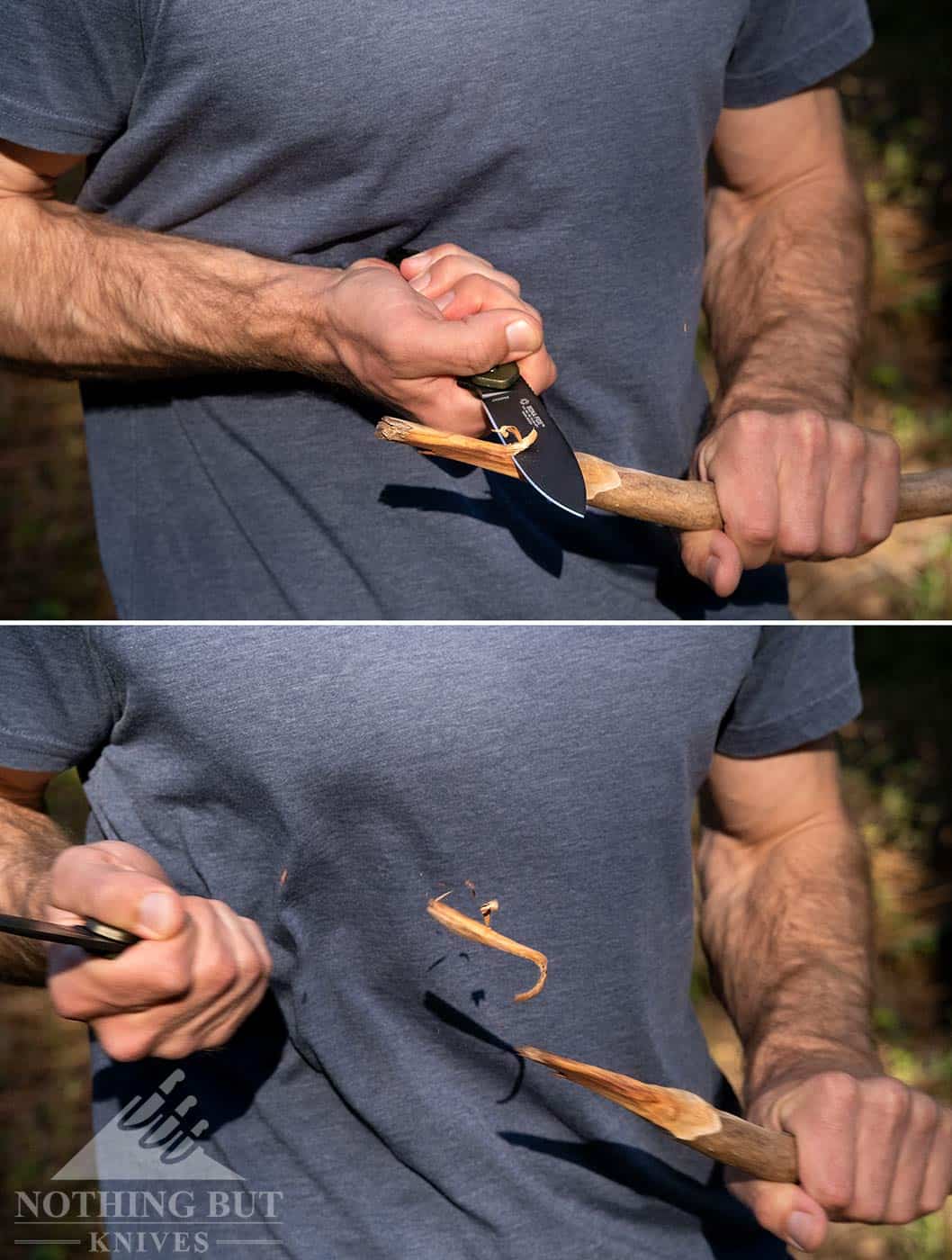
With 1.4116 you have a little more pliability. It doesn’t mind being thin (just ask the kitchen cutlery companies), but D2 is a much more rigid steel. It’s likely that either Ken Onion or CRKT just saw too high of a risk in dropping thin D2 into the hands of grubby dirt slingers like me who are going to smash the blade into every hard-use task they come across with little to no regard for either their health or the knife’s condition, and then complain about it later.
I’ve seen pictures of the limited edition Bona Fide with S30V and noticed it has the same compound grind as the D2, and I have to think it’s for the same reason, because S30V can get pretty chippy at thinner grinds as well (unless they thought a full flat was just too boring for a premium steel). In fact you can see the dangers of D2 in the grind that CRKT did on the silver Bona Fide we got.
The point is, I think I understand why they’ve done this, but the decision has consequences, and ultimately I have to say that CRKT doesn’t have their D2 treatment down.
The 1.4116 OD Green Bona Fide
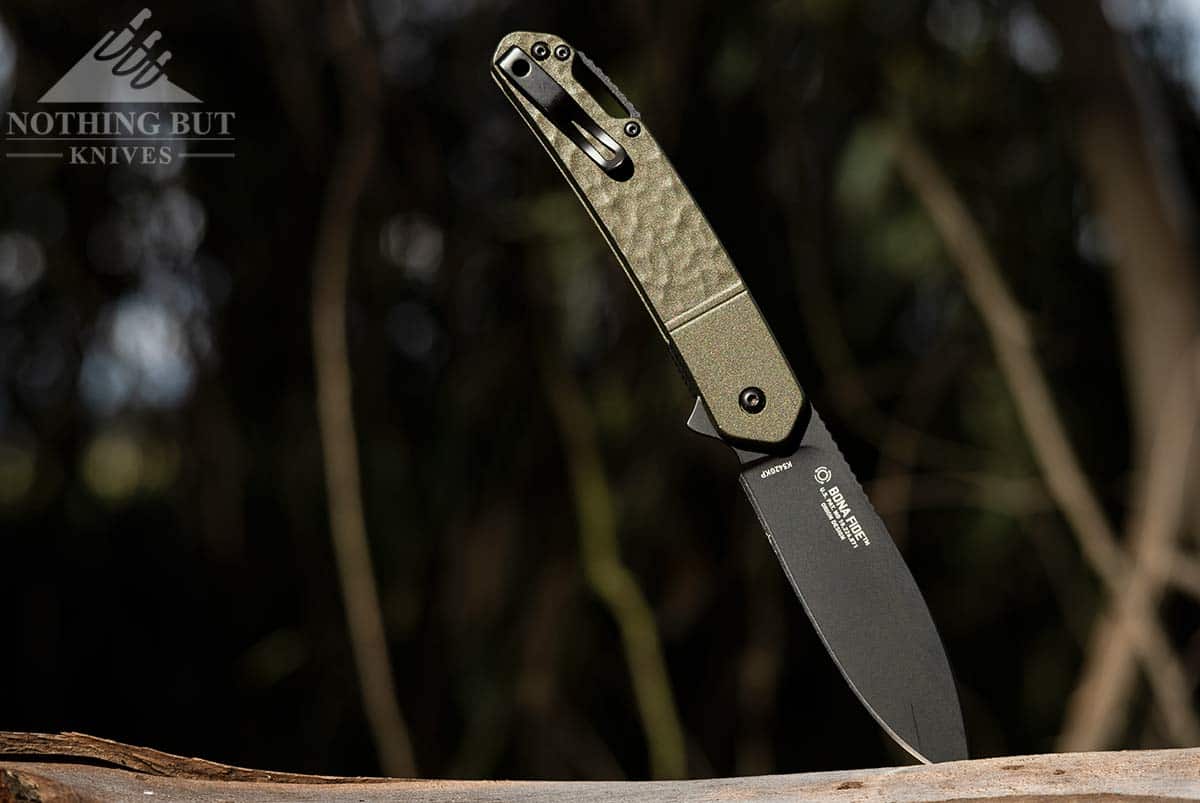
This one is a great gardening knife. It’s easy to clean and it makes nice, clean cuts that are good for opening up bags of dirt or trimming stray shoots off a tomato plant when you forget to bring your shears along.
The full flat grind cuts beautifully. It sails through paper, and cardboard is pretty easy to work with. The blade is also lighter which makes the action a lot nicer, and I suspect adds to the longevity of the knife’s inner workings.
My main problem has come in trying to fix up the edge. The retention isn’t great, of course, and the steel is frustrating to hone because it’s too easy to push a bur in the other direction. I would do three passes on one side and feel the whole edge switched to the other side of the blade. Finally I just gave it one good pass on one side and got it straightened out.
Now I know I can clean most damage to the edge with just a few passes on a honing rod, but that damage happens pretty easily, and it takes kind of a delicate hand to fix up just right sometimes.
The D2 Silver Bona Fide
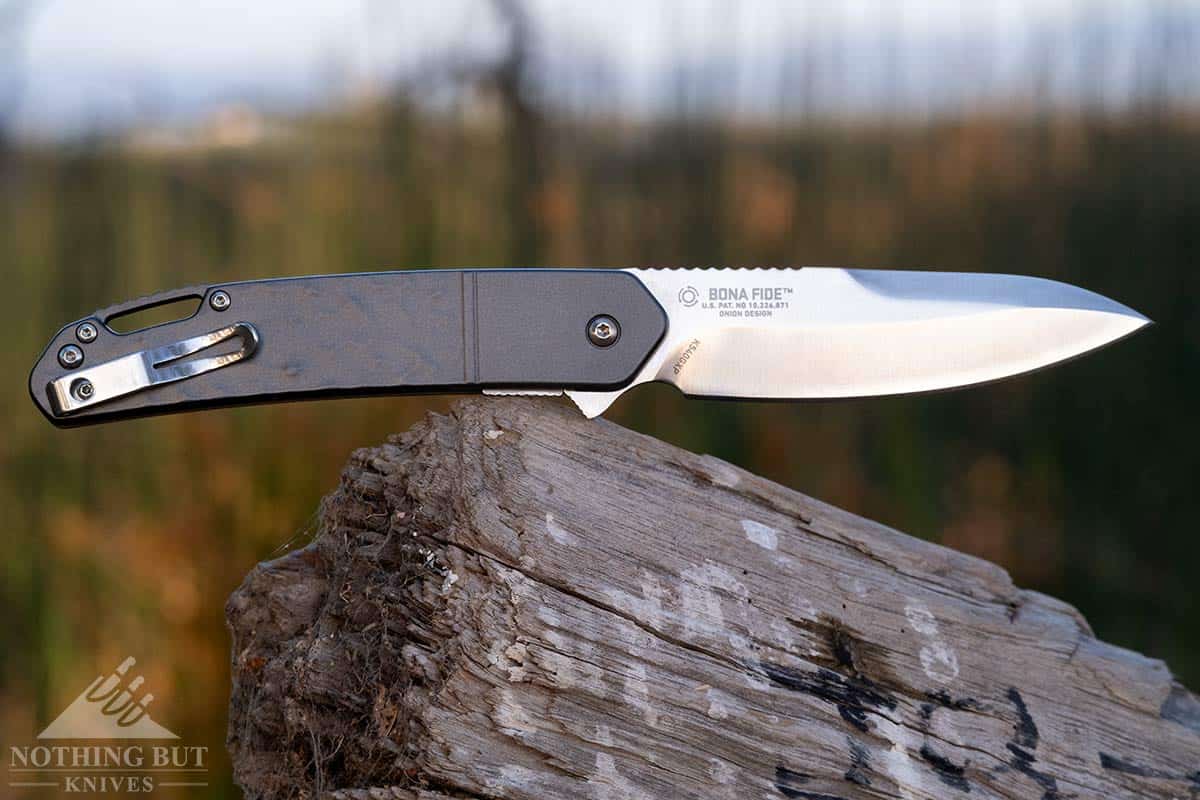
The D2 version was the one I was expecting to like the most (being a little biased toward D2 knives to begin with), but the performance was actually a little disappointing.
There is definitely more resistance on a paper cut with this thing. That’s to be expected though. It’s not a full flat grind like the black-finish version, but the spine and the width right behind the edges are just about the same, so the angle becomes wider much faster and creates a lot more friction during a long cut.
It occurred to me, though, that I’ve used a lot of knives with a similar edge width that cut beautifully. Off-Grid has a whole line up of thick knives in D2 that sail through paper. It wasn’t until we were looking at some of the pictures we took right after getting the knife that we saw what might be the larger problem: CRKT’s execution of the grind. There are little microfractures all along the rounded section of the top of the blade from the rough grind job.
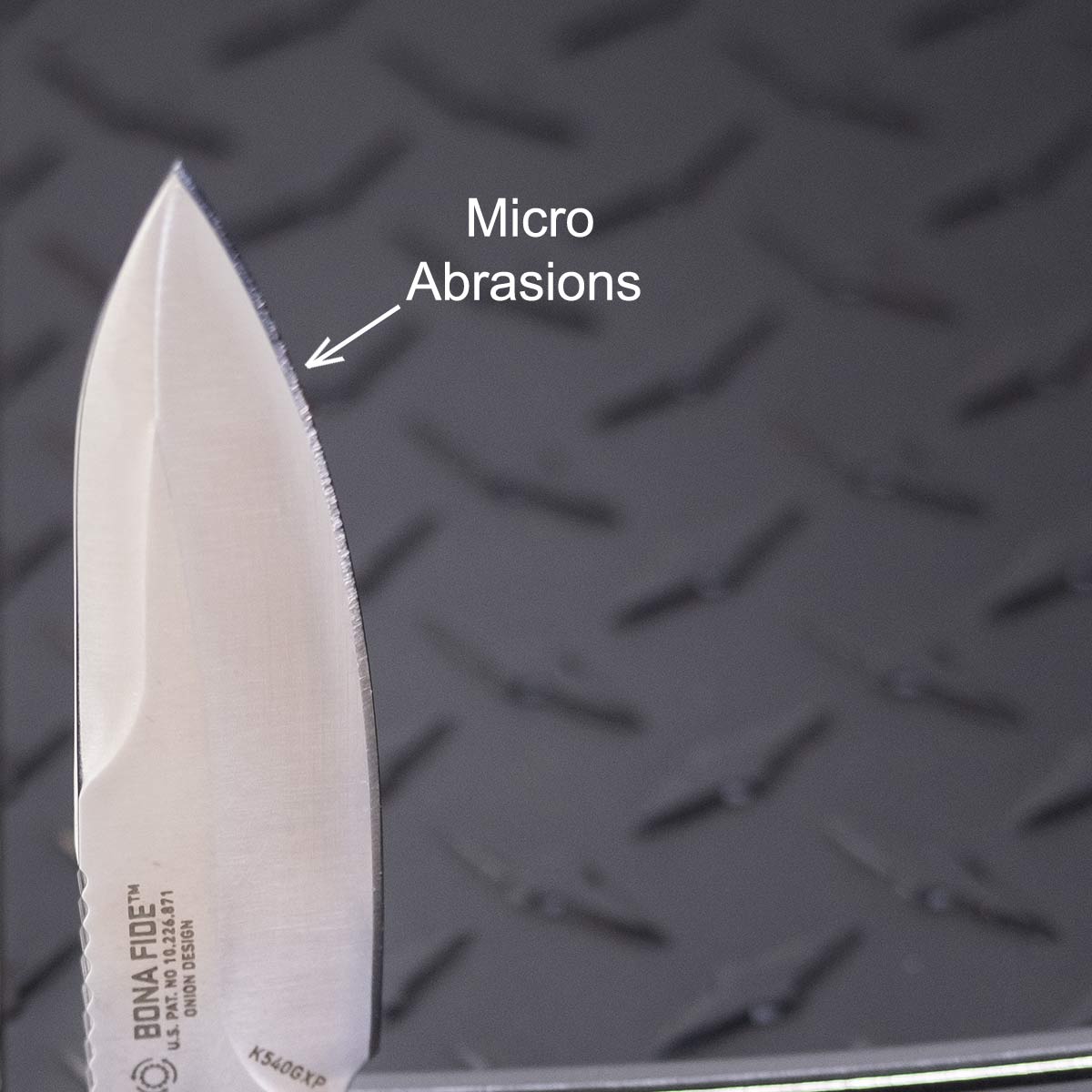
I can’t say for sure what these are from. I only know that’s how the edge was right out of the box. But I also know (in all fairness) that D2 is a tricky thing to grind and sharpen. It’s a hard steel with large carbides, so it likes to do exactly what happened to this Bona Fide. Learning to sharpen and strop D2 was certainly a learning curve for us, but we did finally work it out after a few drunken half hours.
CRKT apparently hasn’t gone through the same thorough process of trial and error. After working with both versions of this knife, it definitely shows which steel they’re more comfortable working with.
That little problem aside, the silver Bona fide cuts through cardboard pretty well, but it doesn’t exactly glide. A half hour session on a few hefty boxes did do a small number on the edge. There was about an inch of edge at the bottom where I was using it the heaviest that would barely even start a cut on paper afterwards. There was also a slight roll near the top, but I’m not sure if that’s from my use or from CRKT’s impeccable QC department.
All in all, I don’t think that’s too bad of an outcome where edge retention is concerned. It’s not an impressive outcome, but more or less within the boundaries of reasonable expectations for a D2 blade.
If you’re wondering which of these versions is better, though, I can best answer you by saying that the OD Green version is sitting in my pocket as I write this.
Great Design, Rough Execution
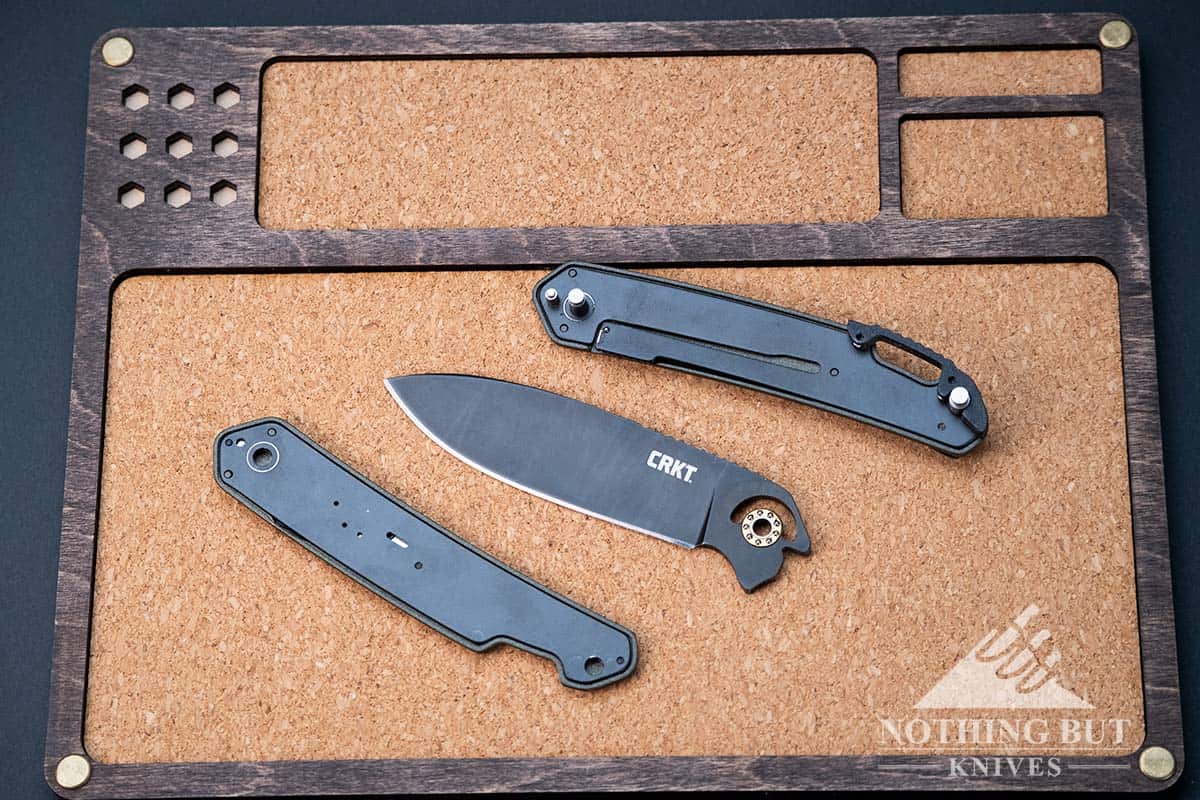
I should probably get to the part where I talk about how much I love the Field Strip 2.0 technology in this knife, and how frustrated I am with CRKT’s execution of it.
One of my big worries about the design was that it would be too easy to disengage the Field Strip and end up with the scales coming off halfway through a hard cut. But even when I don’t get the scales fully locked back into place, I haven’t really felt the knife trying to come apart.
In fact, when we first got the knife I wasn’t even sure which position unlocked the scales, and I ended up using the knife with the Field Strip disengaged for a good five minutes before I decided to really sit down and figure the thing out.
That said, over time that field stripping gets a little more finicky (mostly in the D2 version). After the first dozen times taking this apart and putting it back together, and after so many hours of fidgeting, I could start to feel the pieces wearing a little. Not so much that it stopped functioning, or even so much that the knife has become unsafe in any way. It just starts to rattle a little and the pieces start to feel a little less inclined to click back into place.
I’m guessing this either has something to do with how CRKT has measured out the levers and pins for the Field Strip, or the metal they’re using for the liners is just a bit too soft. Or, it’s because I’m ham-handed monkey person that isn’t using the mechanism properly. That one is always a possibility.
The Action and Fidgeting
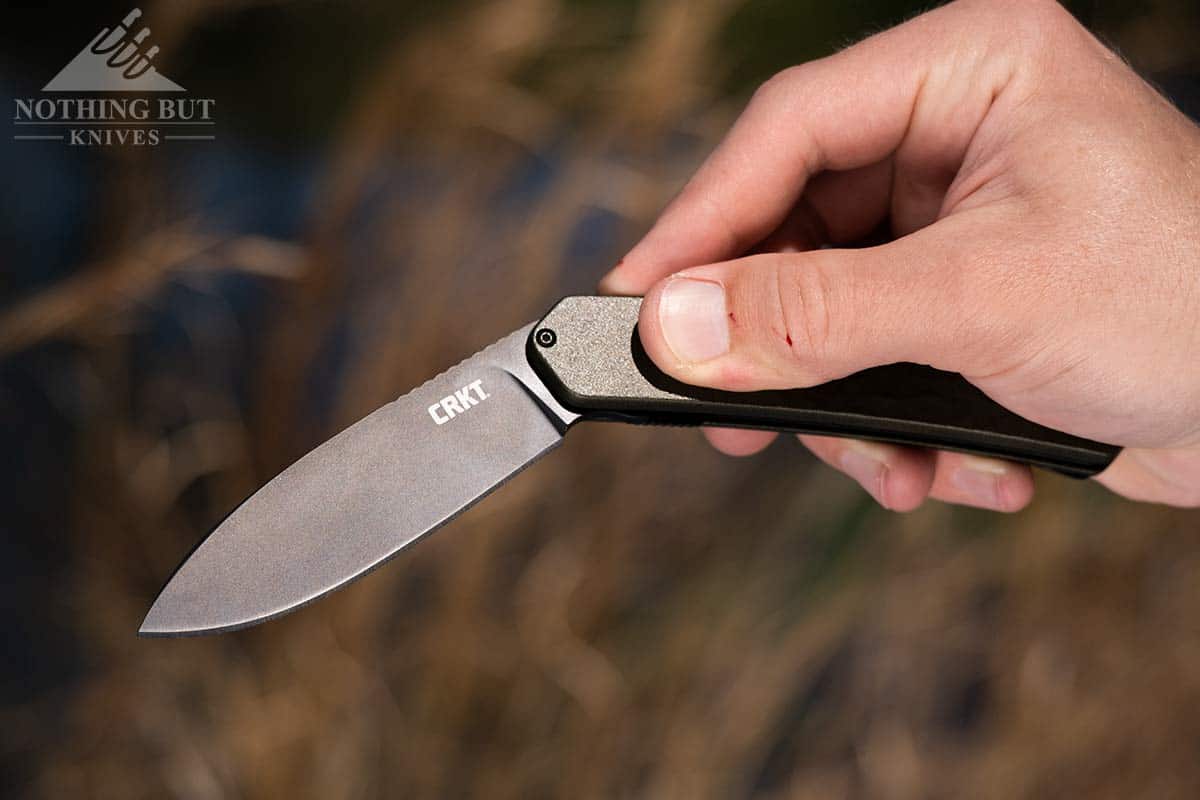
On the OD green version, the action is pretty nice. There’s some awkwardness at first because the blade is so long and has more weight at the top because of the way the profile widens out a little. So the blade closes faster than I’m used to. I had one rough learning moment with the green Bona Fide where it closed on my index finger when I was getting a little too creative with my closing technique.
The action is tricky in a different way with the silver Bona Fide. When we first got that one, the blade was a little off center, so I tightened up the pivot screw to get it lined up, but that made the action just a little too tight. Even after taking it apart and oiling the bearings I have yet to find a sweet spot where the action feels smooth and the blade is exactly where it needs to be.
I think that problem comes from the D2 blade being a little heavier. The wider grind on that results in more blade stock, which makes the D2 version about a sixth of an ounce heavier. I know that doesn’t sound like much, but all that extra weight is in the blade, so while you won’t feel the difference in the hand when you pick the knife up, you will definitely feel it when you open the knife.
OD Green Bona Fide
Silver Bona Fide
The Field Strip 2.0 Fun Technical Stuff
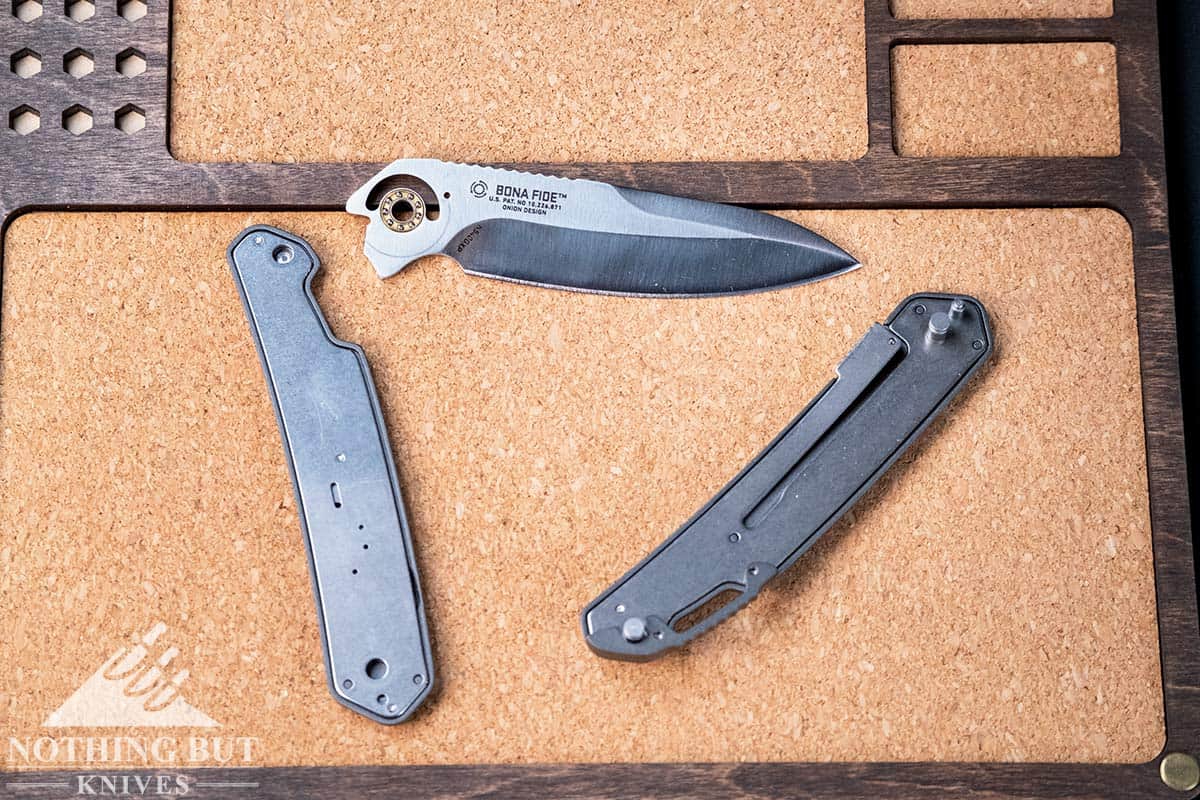
If you’re curious how this iteration of the Field Strip works, CRKT actually has a pretty decent video that shows the inside mechanics.
If you look close at the top and bottom pins after you disassemble the knife, you’ll notice they’re slotted on the top. Basically the way they keep the scales from coming off is with a hooked piece of metal inside the liners of the side that doesn’t have the pins screwed in. That metal piece nests inside those little slots on each pin when the Field Strip lever is in the locked position.
When you move the Field Strip lever up, it moves that hooked piece of metal out of the slots, freeing that side of the knife up to be removed. You can actually see that metal piece move if you look at the underside of that scale as you’re engaging the lever.
Potentially, you could remove that inner lining of that scale to get at the Field Strip metal piece. It looks like they’ve left a slot in the side that is suspiciously screwdriver shaped. When I tried to pry it with a plain old flat head it felt like I was going to crack the scale before I got the liner off, so I would suggest you only attempt this if you’ve gotten something pretty caustic in the guts of this knife.
The design is full of possibilities, though, and I love that about it.
Is the Price Worth It
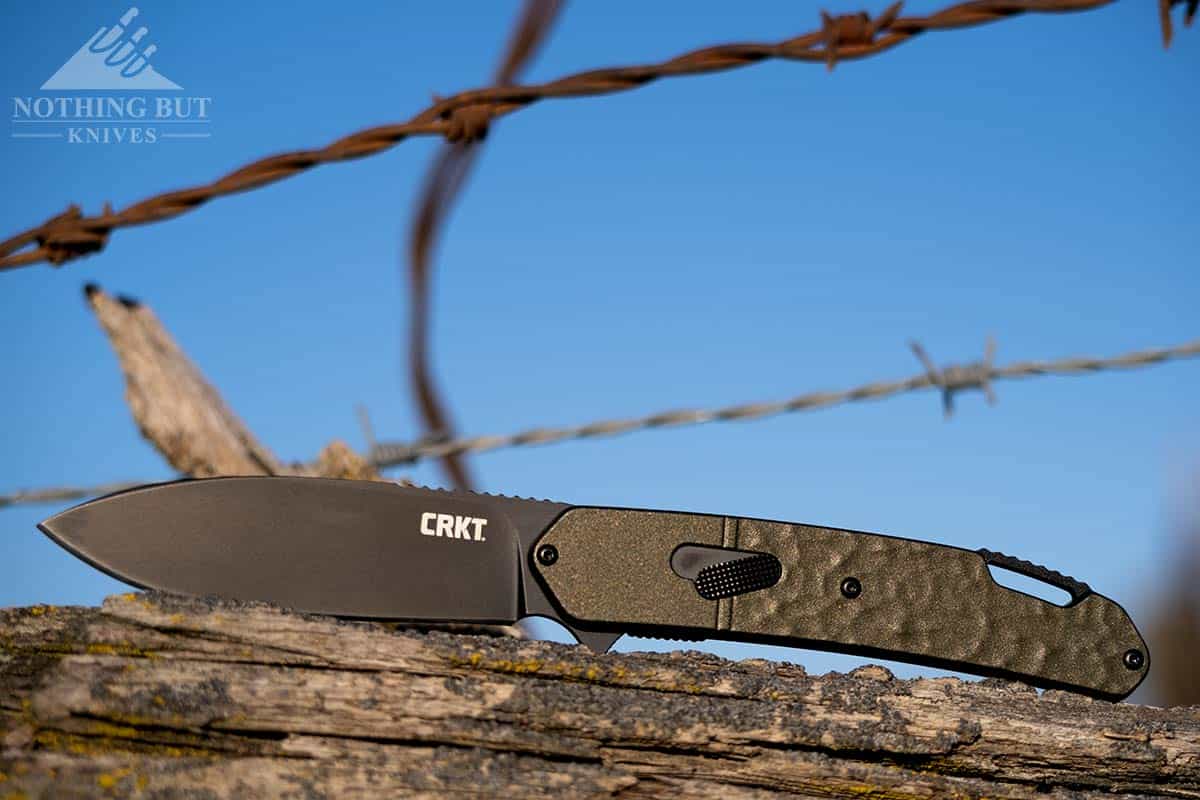
I have to stop myself somewhere and recognize that the Field Strip 2.0 is probably a tricky technology to work with in manufacturing, especially if you’re trying to keep it within a certain price point. But in that vein, the price is only impressive if you look at it from the right perspective.
On the one hand, if you’re looking at all the folders out there with an aluminum handle and a D2 (or 1.4116) steel blade, you see a massive range of cheaper options that are either more durable or have sharper edges. Especially if you’re looking in the $100 range, there is no end to the good outdoor and hard use designs.
But you won’t be able to take any of them apart one handed without any tools.
A lot of the value in the Bona Fide depends on how much you care about the Field Strip 2.0, in that sense. If quick cleaning isn’t that big of an issue for you, then this knife might be a bit too esoteric. But if you’re out in the field a lot, or prone to losing tiny screws, then this knife is a dream come true.
If the Field Strip 2.0 tech doesn’t interest you may want to check out the CRKT Facet. It was also designed by Ken Onion, but is not a Field Strip capable knife, so it is about half the price of the Bona Fide.
My Frustration with CRKT Continues
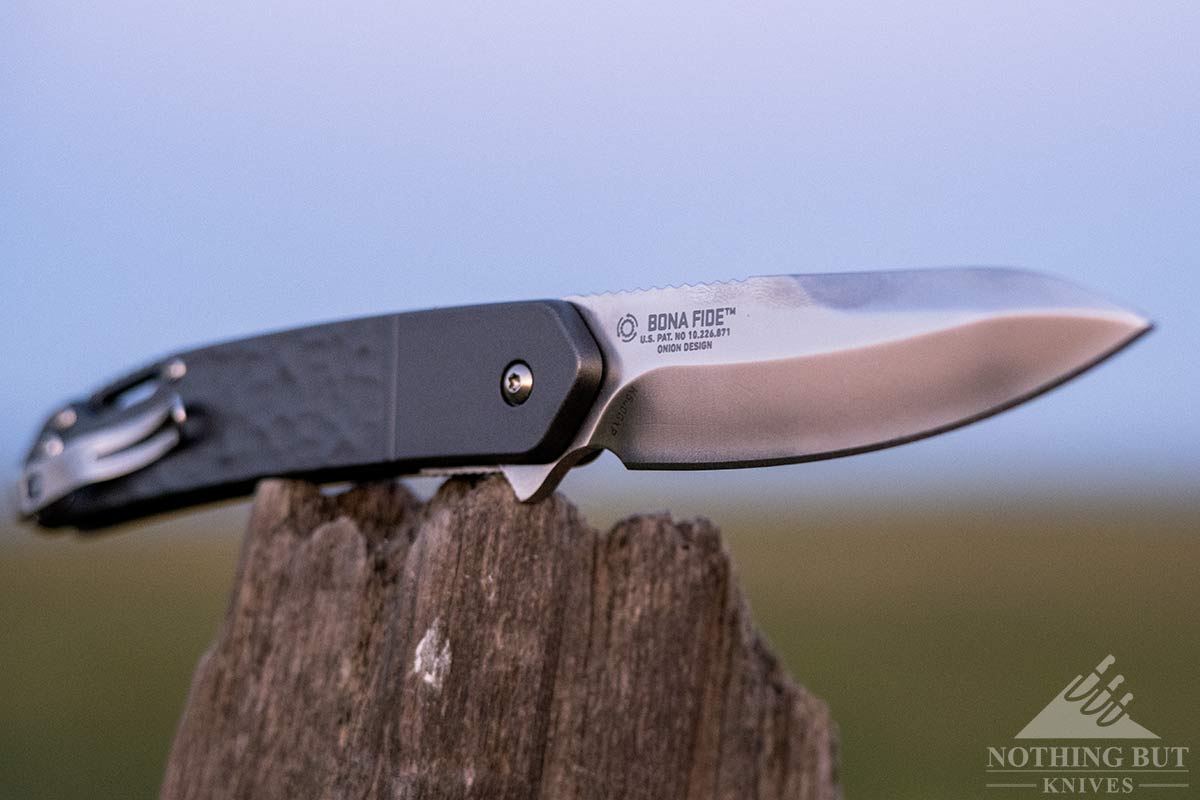
The issue with Bona Fide is similar to the one I had with the Gerber Sedulo. It’s a great design with a high roof on utility options if the company doing it could just get their steel figured out.
In the same way that Gerber seemed to be having trouble finding a good grind for S30V, CRKT doesn’t seem to have worked out the trick to getting a smooth, sharp grind for D2. Admittedly it’s a hard steel to work with, but they really shouldn’t be pushing things like this out for $100 if they get it to cut at least as well as companies pushing designs with the same steel for $20-50 less.
If they had just given us the 1.4116 version with the option to get it in silver or green, this would be a happier blog. I would complain that I wished they would use something like 420HC or D2 because I wouldn’t know any better. But this would otherwise be a glowing review.
Now I’m just sitting here fuming at CRKT for not trying as hard with this as they should have.
But this is still a great knife, because on that table with 50 other flippers that have come out since 2020, the Bona Fide stands out. It doesn’t look or feel like over half the other designs out there, and for that I appreciate the knife enormously.
So in answer to the question: Yes. For me, the price is definitely worth it. But I only admit this grudgingly out of recognition and genuine love for Ken Onion’s work.
Conclusion
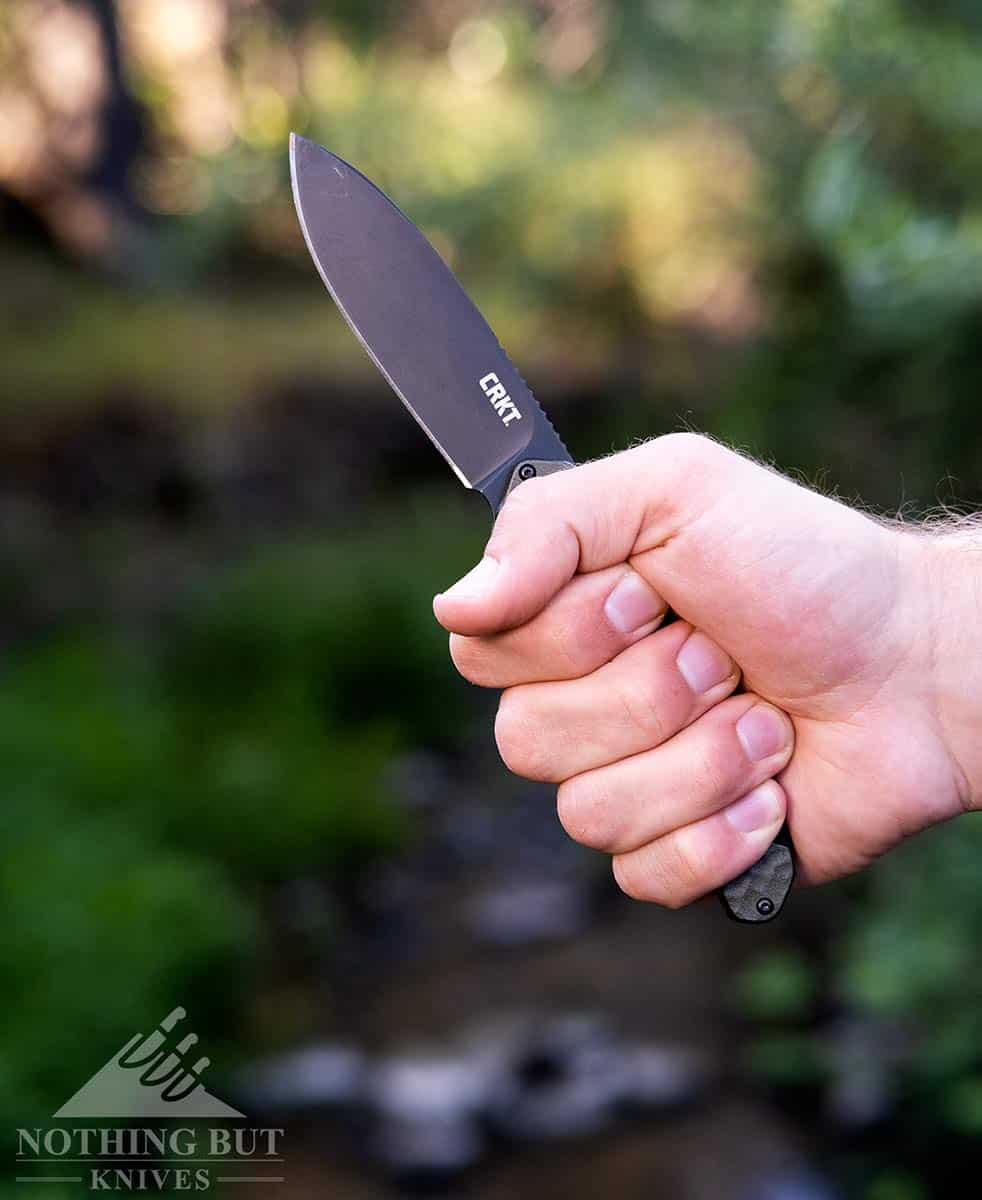
It almost seems pointless to conclude after I just said the knife is worth the price, but even if you’ve locked yourself into buying the Bona Fide, the problem of which Bona Fide to get remains:
Do you want a clean cutting blade made of steel that’s a little too soft, or do you want a strong pry bar of a thing that’s harder (and better looking, frankly) but cuts with a limp?
Honestly, the edge should make the decision for most people, but I’ll just speak for myself, and for me the money lands on the OD green version. Partly because I like the color, but mostly because that smoothness in cutting is more useful to me than any other feature, and I really don’t like dropping three digits on a half-dull knife. So until I take the time to take the D2 version to a grinder to clean the edge and maybe thin out the geometry, the middling German steel stuff will be my go-to EDC.

Such a great review and read..Thank you for saving me $100.00!!
Crkt makes me feel like they want just take someone’s fantastic design and puke it out fast and then want to charge a premium price for a half As% product.This is why I wont purchase another crkt any time soon if not ever again! I wanted the green model but don’t like 1.4116 steel i understand its a tough steel and all but and how many models can you possibly put out in that steel??? I often wonder how this company even relevant anymore ?? I like the d2 but don’t want that blade in a non coated blade or that blade grind /shape?? The one model in s30v or s35vn ??which they could have sold all day long.It was only a limited edition.. It wasn’t even available to most customers if not at all? Also not to mention a ridiculous price attached on all models Including almost “All” of the field strip knives and i love the idea and design don’t get me wrong…But lets be real…come on crkt get it together!!!
I know, right? It’s like they don’t even care about the dozens of us out there who look at steel composition graphs before buying knives.
I have had the knife for a week now. OD green version to be exact. I need to say that the I am satisfied w the price of admission. Could the the blade steel be better, yep. Does it dull faster than I would like, yep. But 2 min on my Worksharp field sharpener and this thing is a razor. The action takes a bit of adjustment, but for being a 3 piece knife that goes together every time. I dig. The fit and finish on mine was perfect. It even centers after you take it apart. Overall, I have spent $100 on other knives and not been as happy.
There are definitely worse options in this price range, and I’ve had a much better experience with the OD Green than the silver.